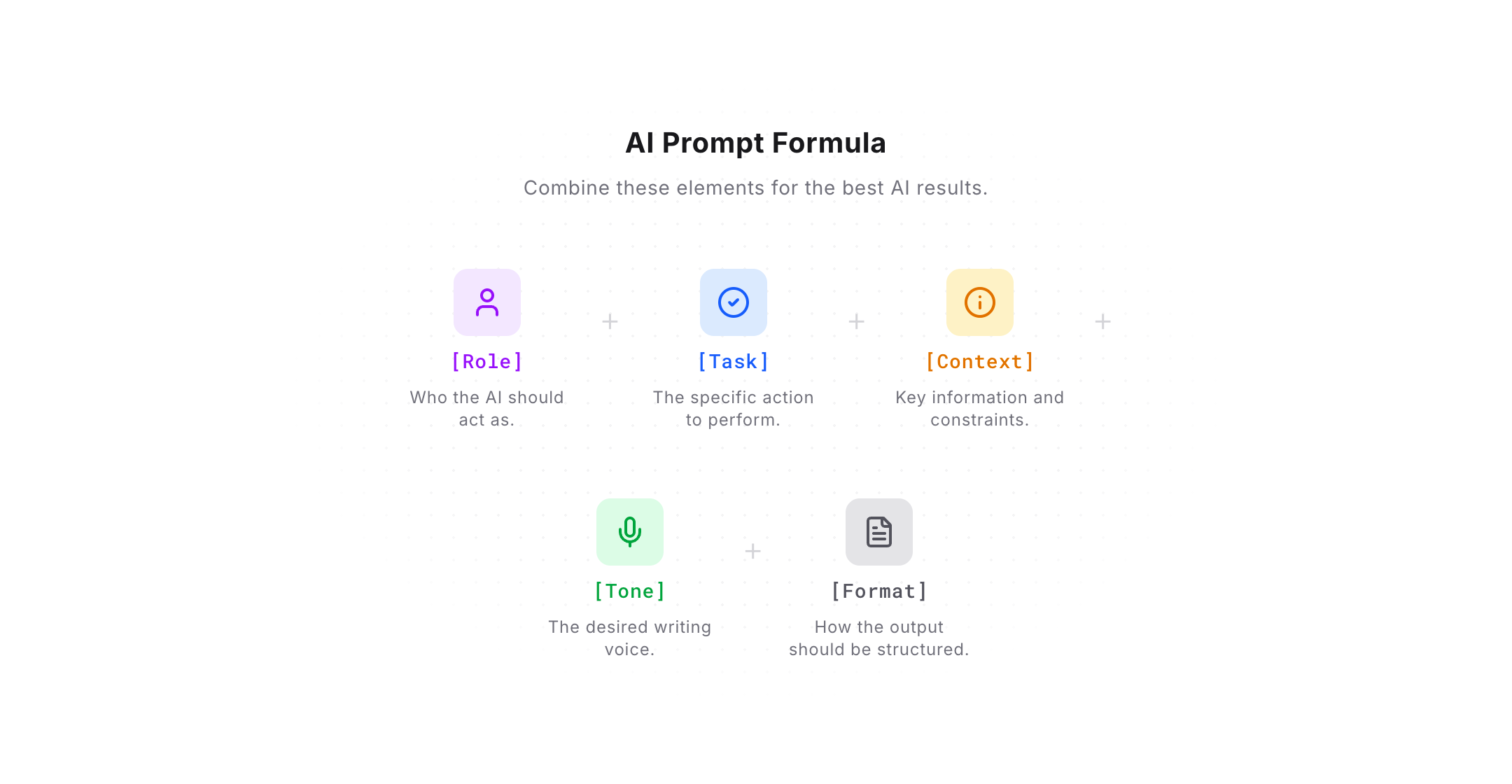You've just finished a 12-hour shift. The kitchen is clean, the numbers are crunched, and now it's time to create a email campaign for this weekend's specials. You stare at the blinking cursor, completely out of creative energy. Sound familiar?
For busy restaurant owners, marketing often feels like a second full-time job. But what if you had a creative assistant on call 24/7, ready to write mouth-watering menu descriptions, draft promotional emails, and brainstorm new ideas in seconds?
This partner is here, and it's called Generative AI. This guide is your roadmap to using this powerful tool to create compelling content, engage customers, and save hours of time.
What is Generative AI, Really?
Forget the complex technical jargon. Think of Generative AI as a creative partner. You give it a simple instruction (a "prompt"), and it uses its vast knowledge to create brand-new content for you.
Imagine giving a skilled chef a few key ingredients (your prompt) and letting them create a unique dish (the content). You’re still the head chef, guiding the process and making the final touches, but the heavy lifting is done for you. It's the ultimate tool for overcoming the dreaded writer's block.
Part 1: Upgrade Your Menu & Core Messaging
Your menu isn't just a list of items; it's your most important sales tool. It tells your restaurant's story and sets the tone for the dining experience. Tools like ChatGPT and Google Gemini can help you craft a menu that not only looks good but also sells. It's about going beyond simply menu descriptions to create a brand narrative that resonates with your customers.
Write Mouth-Watering Menu Descriptions
Transforming a simple list of ingredients into a compelling description is an art, and Generative AI excels at it. It can turn a simple ingredient list into a story that makes customers crave your food.
Here's an example of how to use AI to enhance your menu descriptions:
Chicken Breast - with potatoes and seasonal vegetables.
Write a mouth-watering, 2-sentence menu description for a roasted chicken breast served with fingerling potatoes and seasonal vegetables. The tone should be rustic and inviting.
Our signature chicken breast is roasted to golden-brown perfection, locking in its natural juices. Served alongside crispy, herb-tossed fingerling potatoes and a medley of fresh vegetables sourced directly from the local farmer's market.
This automated process isn't limited to just your main dishes. You can use AI to apply the same creative flair to any item on your menu, from appetizers to desserts.
Craft Your Brand Story
Your restaurant's story is what sets you apart. It's the passion, the history, and the unique vision that makes people fall in love with your brand. Generative AI can help you articulate this story into words that feel authentic and engaging.
Here's an example of how you can turn a few key details into a brand story:
Write a compelling brand story for a family-owned Italian restaurant. We started in our small kitchen, serving family recipes, and have grown into a beloved neighborhood spot. Our mission is to share our passion for authentic, comforting food with our community. The name is "Mama Rosa's Cucina."
At Mama Rosa's Cucina, our story begins in a small kitchen where family recipes were lovingly crafted and shared. What started as a humble endeavor has blossomed into a cherished neighborhood spot, where our mission is to bring the warmth and comfort of authentic Italian cuisine to our community. Every dish we serve is a taste of home, made with love and a tradition that you can feel in every bite.
Part 2: Automate Your Marketing
The restaurant marketing is one of the most important tasks for any restaurant owner. It's how you attract new customers, keep regulars coming back, and build your brand. But the marketing calendar with social media posts, promotional emails, and SMS blasts can feel like a full-time job.
This is where tools like ChatGPT and Google Gemini can be game-changers. Instead of manually creating every message, these AI-powered tools can generate high-quality content in seconds. From catchy social media posts to engaging promotional emails, they can help you maintain a consistent marketing presence without the stress.
Create Social Media Content in Seconds
Instead of spending hours brainstorming and drafting social media posts, you can use AI to generate engaging content quickly.
Here's an example of how to create a social media post for a new seasonal cocktail:
You are a social media manager for a cozy neighborhood bar. Write a catchy Instagram post announcing our new seasonal cocktail, the "Autumn Breeze". It features apple cider, cinnamon, and a splash of bourbon. The tone should be fun and inviting, and include relevant hashtags.
🍂✨ Introducing the "Autumn Breeze"!
🍹🍏 Embrace the flavors of fall with our latest seasonal cocktail, featuring crisp apple cider, a hint of cinnamon, and a splash of bourbon. It's the perfect drink to cozy up with as the leaves change color!
🍁 Available for a limited time only, so come sip into the season with us! 🥂
#AutumnBreeze #FallCocktails #CozyVibes #NeighborhoodBar
Draft Promotional Emails & SMS Campaigns
Staying connected with your customers through email and SMS is one of the most effective ways to drive repeat business. But consistently coming up with fresh, engaging content to keep your customers engaged can be a real challenge.
That's where AI-powered tools come in. They can help you draft promotional emails and SMS campaigns that capture your brand's voice and resonate with your customers.
Here's an example of how to create a promotional SMS message for your loyalty members on a rainy Tuesday:
You are a marketing manager for a casual dining restaurant. Write a short and engaging SMS message for your loyalty members, promoting a special offer for a rainy Tuesday. The offer is "Buy one entree, get one free". The tone should be friendly and encouraging. Include a discount code "STAYWARM20".
Hey [Customer's Name]!
It's a 🌧️ rainy Tuesday. Bring a friend and enjoy our special "Buy one entree, get one free!" Use code "STAYWARM20" at checkout.
Brainstorming Promotional Ideas
Coming up with fresh, new promotional ideas to attract customers can be tough. Instead of starting from scratch, you can use AI to generate a list of creative ideas based on your goals and target audience.
Here's an example of how to brainstorm promotional ideas for a summer campaign:
You are a marketing consultant for a trendy cafe. Generate a list of 5 creative promotional ideas for a summer campaign aimed at attracting young professionals. Focus on unique themes and special offers.
-
Summer Sip & Study - Offer a discount on iced coffees and smoothies for students and young professionals who show their student ID or work badge.
-
Happy Hour Happenings - Create a daily happy hour with discounted drinks and appetizers, featuring live music or DJ sets on weekends.
-
Social Media Contest - Encourage customers to share their summer cafe experience on social media for a chance to win a free meal or gift card.
-
Bring a Friend - Offer a "Buy One, Get One Free" deal for customers who bring a friend to the cafe during specific hours.
-
Summer Loyalty Program - Launch a summer-themed loyalty program where customers earn points for every purchase, redeemable for exclusive summer merchandise or discounts.
Responding to Customer Reviews
Engaging with customer reviews is crucial for building a positive online reputation. However, writing a personalized reply to each review is nearly impossible. That's where AI can be a lifesaver. You can use it to draft thoughtful, on-brand responses to both positive and negative reviews.
Here's an example of how to respond to a positive 5-star review:
You are a customer service manager for a family-owned restaurant. Write a warm and appreciative response to a 5-star review that praises our friendly staff and delicious food. The tone should be genuine and thankful.
Hi [Reviewer's Name],
Thank you so much for your kind words! We're thrilled to hear that you enjoyed our food and found our staff to be friendly. We can't wait to have you back again soon!
Here's an example of how to respond to a negative 1-star review:
You are a customer service manager for a family-owned restaurant. Write a professional and empathetic response to a 1-star review that mentions a long wait time and cold food. Apologize for the experience and offer to make it right. The tone should be sincere and solution-oriented.
Hi [Reviewer's Name],
We're truly sorry to hear about your experience with us. We strive to provide excellent service and delicious food, and it seems we fell short during your visit. Please reach out to us at [contact information] so we can make it right. We appreciate your feedback and hope to have the opportunity to serve you better in the future.
Part 3: Your Simple Formula for Success
Getting great results from tools like ChatGPT, Claude, or Google Gemini is all about giving clear, specific instructions. Think of it like training a new employee. The more precise you are about what you want, the better the outcome.
Here’s a simple formula to help you craft effective AI prompts:


- Role: Define the role you want the AI to assume (e.g., social media manager, marketing consultant, customer service representative).
- Task: Clearly state the task you want the AI to perform (e.g., write a social media post, draft an email, respond to a review).
- Context: Provide any relevant details or context that will help the AI understand the task better (e.g., target audience, specific product or service, special offers).
- Tone: Specify the tone or style you want the content to have (e.g., friendly, professional, humorous).
- Format: Indicate the desired format of the output (e.g., short paragraph, bullet points, numbered list).
You're Still the Chef
Generative AI is one of the most powerful tools available to a restaurant owner today. It saves you priceless time and money, allowing you to create marketing that was once only possible for brands with huge budgets.
But remember, you're still the chef. AI is here to assist, not to replace your unique voice and vision. Always review and refine the content it generates to ensure it aligns with your brand and resonates with your audience.

